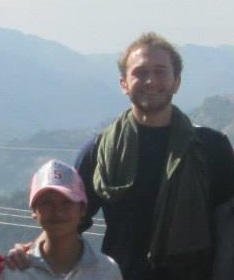My name is Chris Benson, Arabic-tutor-on-leave for the Loyola Ricci Scholar program, which sends me to Italy, John Felice Rome Center, for one semester and China, The Beijing Center for Chinese Studies, for the spring. At Loyola, I’m studying History, Sociology, and Anthropology and minoring in Arabic. I have worked as tutor for Arabic at Loyola Chicago with ustaadha Sawsan, and I’m pleased to get the chance to continue to tutor in China. In my year abroad I’ve been surprised by how hard it is to find a place untouched by Arabic. In Italy the influence was as expected; the history of an Islamic state in Sicily and the contemporary influx of North African immigrants were obvious. More surprising is the Arabic in China.
There are two predominant Muslim minorities in China: the Uyghurs, a Turkish group using a Perso-Arab script who live in the Northwest, and the Hui, the remnants of Persian traders who are scattered in communities throughout China and study Arabic as their second language. Both groups use Arabic for their religion.
My first exposure to Arabic in China happened in the first week, when a friend introduced his tutor to me as “Medina” (مدينة). A Uyghur from the Northwest, she’d learned I tutored Arabic at Loyola, and when she returns from New Year break we’ll begin exchanging language lessons (Arabic for Chinese).
Just last week I discovered Arabic again, at a Hui village I visited. The difficulty of holding on to the language was obvious, and some informational signs bore a mangled script, with the letters separate and in backwards order. But for once in a Chinese town I could read the street signs when I was lost, pointing the way to the Mosque (مسجد) where our visit ended. There I was able to look in at the Arabic classroom, recognizing the quotes from the Quran on the board, and admire this minority’s noble and so far successful effort to maintain its culture. I don’t know whether to say “it’s a small world” or “the Arab-Islamic world is larger than people think.”

